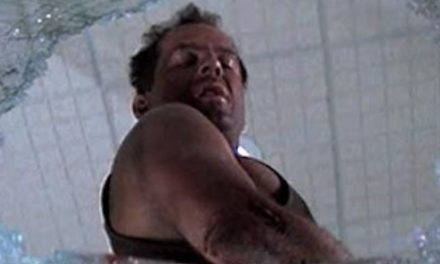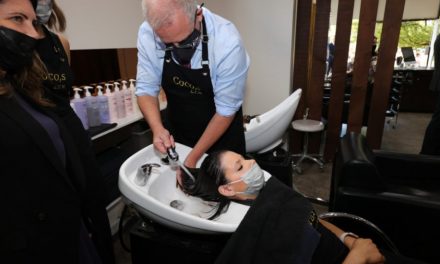For fans of film and the cinema-going ritual, there’s nothing like experiencing the joys of a big screen movie with a crowd.
The last time I went to the cinema was New Year’s Day. That’s 231 days ago, at the time of writing. 231 days. It might be the longest I’ve gone between seeing new movies at a cinema since I first started going regularly over 20 years ago.
COVID-19 has led to unprecedented times for us all. It has robbed us of lives, safety, certainty, jobs, health and a sense of community, among other things. I lost my job to the pandemic in April, probably the toughest blow I’ve been dealt thus far.
But the thing I miss the most, other than some sense of financial stability and independence, is going to the cinema.
The first movie I ever saw at a cinema was “Mulan”, the animated Disney film, which was released on the 3rd of September 1998 here in Australia.
I was not yet three, and yet I can remember it so clearly. My mum took me to see it. I remember skipping up the aisle, grabbing one of the last cushion booster seats, so that I wasn’t left with the uncomfortable plastic ones, and falling up the stairs, giant cushion in hand.
I loved it. It sparked a lifelong love of going to the cinema to see movies on the big screen.
Funnily enough, more than 20 years on, the COVID-19 pandemic has meant the postponement of the big screen live-action adaptation of “Mulan” by New Zealand director, Niki Caro.
It was supposed to debut in cinemas on March 27. Instead, it will be a trial run for Disney’s streaming service, Disney+, and their adaptation of the PVOD (premium video on demand) model.
In territories where Disney+ is available, Disney will be charging US$29.99 (AU$42) for viewers to buy the movie, in addition to paying their Disney+ subscription fee.
There’s no word yet on whether it will receive the traditional 90-day theatrical window in Australia where cinemas are open, but it signals a significant change from the traditional distribution model.
I’m not overly worried about the fates of big chain film distributors. People have been speculating about the death of cinemas since the 1970s. They are yet to meet their demise. I am, however, worried about how this changes the act of going to the cinema until a vaccine or an effective post-infection treatment for COVID-19 is found and made widely available.
I’m a regular cinema-goer. It’s my favourite pastime. In one week last year, I went to the same cinema four times to see four different movies, to the point I was almost embarrassed the staff might recognise me.
Sitting in the dark with a huge screen and an overly-loud sound system to watch a new movie is comforting. But I haven’t been able to do it for over six months.
And there are things about the theatrical experience that cannot, and will never be able to be recreated at home.
No matter how good your projection or sound system is, it doesn’t recreate the feeling of camaraderie you get with hundreds of strangers in one dark room. It cannot recreate the reactions of the audience when a big plot twist is unveiled.
That last time I was there, on New Year’s Day, was to see Greta Gerwig’s new adaptation of “Little Women” with my mother.
Like most women I know, “Little Women” had been a cornerstone of our lives. My mum had grown up reading the books, and had first seen George Cukor’s 1933 adaptation with Katharine Hepburn as Jo. I’d grown up first watching the Gillian Armstrong adaptation with Winona Ryder as Jo and then reading the books.
Mum and I didn’t think the cinema would be too busy. We were very wrong. The session was almost sold out, the cinema filled with women of all ages.
Mostly groups of women, presumably mostly from the same family. Grandmothers, mothers, daughters and sisters. It was astounding.
I knew the adaptation would be good, I knew the story would be good. I’d seen it before. But nothing prepared me for seeing it in a cinema with that many other women whose lives had also been profoundly impacted by Louisa May Alcott’s book.
We all cried when Beth died. We all laughed when Amy got her foot stuck in the bucket mould. We all cheered as we saw Jo’s book being professionally printed and published. It was an enormously uplifting and satisfying experience.
To have such reactions overwhelm a crowd in one room is to have your own emotions amplified on a much grander scale. It is not something that can be recreated or replaced by home entertainment.
I understand the reticence of many to return to the cinemas. Even I’m anxious about it. Especially as Victoria enters a statewide lockdown and Melbourne is under stage 4 restrictions.
Right now, home entertainment is the best we can do. But, hopefully, as the curve of community transmission flattens, and active case numbers drop, we will be able to return.
Things will not be the same. There will be precautions and safety guidelines. Possibly fewer session times and not as many new movies to choose from, as well as a limited capacity.
But for moments like those I have mentioned, I sincerely hope the act of going to the cinema can be preserved post-pandemic, not just for us, but also for future generations.
Because there’s nothing like a big screen. And for a true fan of film and the cinema-going ritual, there’s nothing like experiencing the joys of that big screen movie with a crowd.











